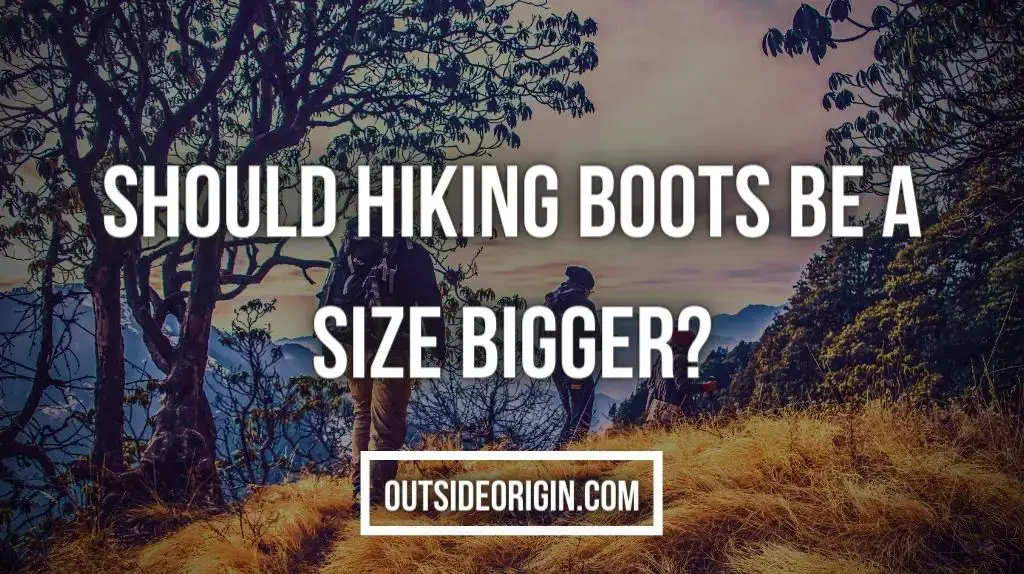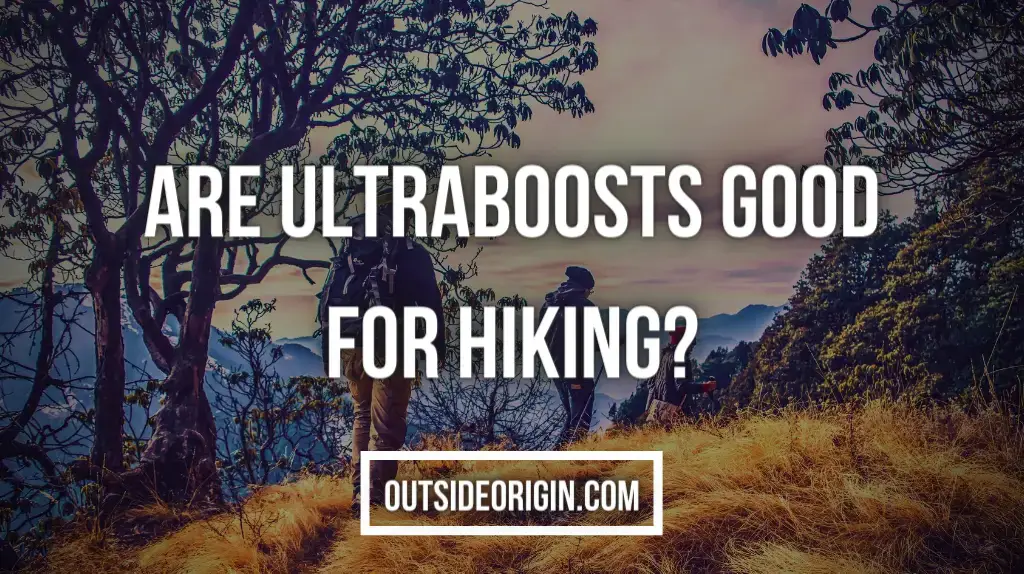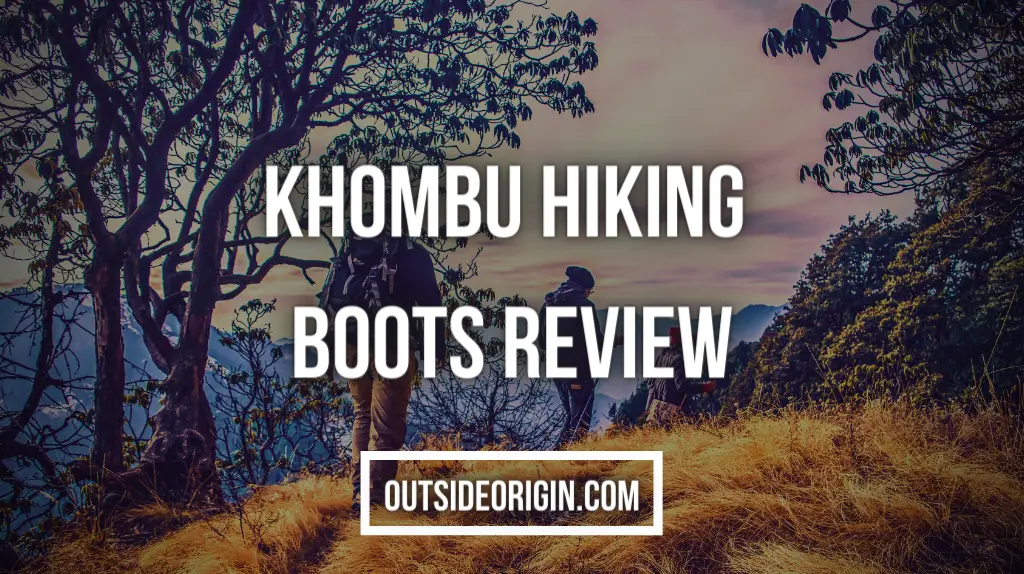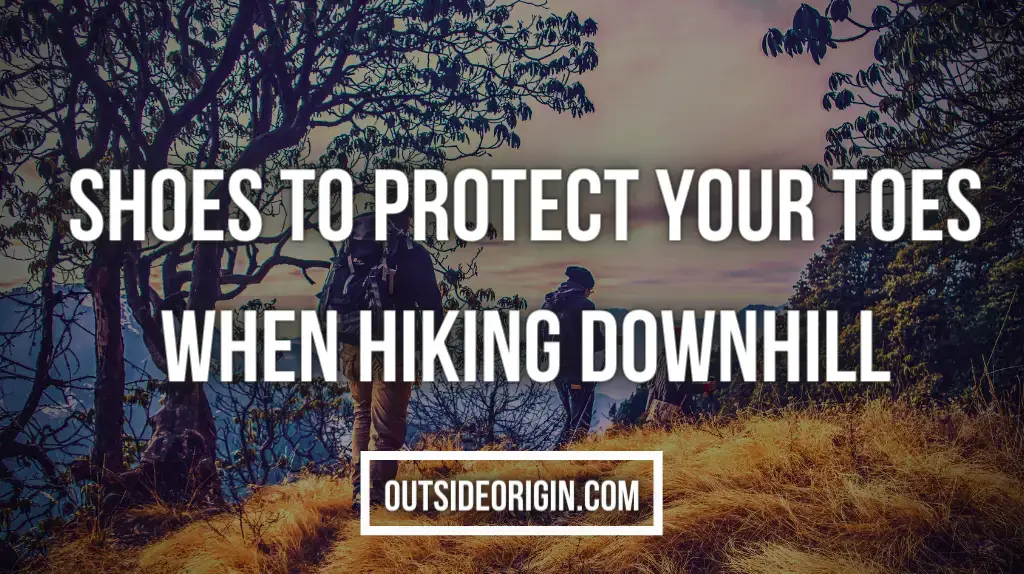Some hikers may disagree on various features offered by hiking boots. Moreover, there is a lot of debate about the best materials, best insoles, and best lacing techniques. But, there is one thing that everyone can and will agree upon – hiking shoes/boots need to fit perfectly. Nonetheless, it is not always easy to know the perfect size that is suitable for you.
Everyone’s experience of trying on a boot feels comfortable in the store, but at some point, it may turn painful and create blisters later on the trail. Generally, experts of footwear recommend buying hiking boots a size bigger than your normal footwear to avoid such situations. However, boots that are too big can create problems of their own.
Why Do Hiking Boots Need To Be Larger Than Regular Shoes?
- Feet get larger over the day because they are bearing your weight while moving around and expand under the pressure
- Feet could get larger during the day because body fluids react to gravity and tend to accumulate in the lower body
- For some – increased pressure and increased fluids – both are reasons for feet expansion in the evening
- Feet get larger because blood vessels expand when you get warm from exercise or on hot days
- Hiking footwear are different than regular footwear as you may be wearing specialized socks and/or insoles during cold weather
- While going uphill and especially downhill, you may need extra room in the footwear
These are only a few of the reasons why you would need to buy hiking boots a size bigger.
How To Make Sure You Get The Best Possible Fit For Your Hiking Boots?

- Always try on the hiking boots while wearing insoles and socks that you plan to wear during hikes
- If your feet are two different sizes or if you are in-between sizes, buy a pair half a size up
- Must fit snugly everywhere, tight nowhere, and enough room to wiggle your toes
- Know your sizes well – foot’s length, width, volume, and arch length – measure on a specially calibrated fit device
- Double-check the measurements by pulling the insoles out and standing on them
- You should have a thumb’s width of space between the longest toe and the insole’s end
- Try the boots at the end of the day when the feet will be the largest after physical activities
- Wear appropriate, familiar socks that can help you accurately and quickly assess the fit and feel of the hiking boots
- Spend time in the boots on flat, inclined, uneven surfaces before going for hikes
- Consider buying brands that you have worn before when shopping online
- Share any fitting issues with your footwear specialist or advisor – only if you have one
- Change your lacing and knotting strategy to test the fit or make it fit better
- Consider buying footbeds aka aftermarket insoles that can enhance comfort, support, fit
- Research about the features like the boot construction, upper material, insoles, midsoles, outsoles, and more
How Big Should Your Hiking Boots Be?
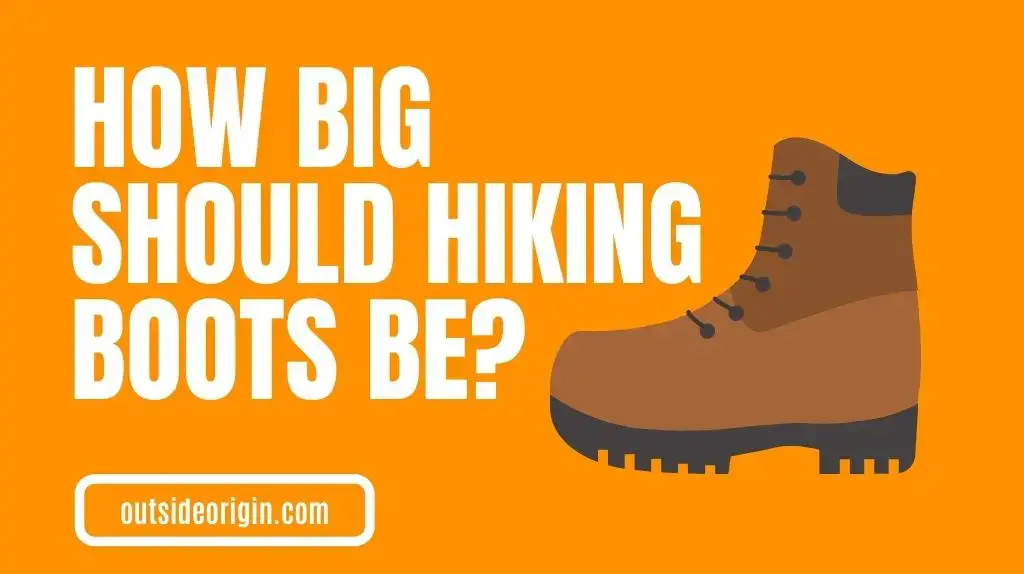
Usually, you would need to buy a size up if you are hiking in winter and need room for thick socks to avoid cutting off blood circulation. Throughout the US, it is standard practice for hikers and backpackers to buy shoes that are a half size larger than their normal foot size.
Almost everyone has swollen feet after long days on the trails. This happens because it is a way that your body protects you from injuries. Simultaneously, your feet start to overwork the blood vessels so that more blood will rush in. This increased blood flow will help heal and repair the muscles so you will be ready to go in the morning.
Sometimes you may not need to increase your shoe sizes just because of the swelling feet. Most of the time, the swelling is minimal and wouldn’t require bigger boots. If you buy hiking boots that are too large for your feet then there is going to be extra room in the front. All that extra space will pull the base of your big toe forward causing serious biomechanical issues. There’s a good chance you are causing more harm than good and end up with a hiker’s toe, blisters, hyper pronation, and arch fatigue after a long hike.
In some rare circumstances, people’s feet have been known to increase in length after strenuous exercise. Unfortunately, this is not the result of swelling because some people end up with a collapsed arch after vigorous exercise causing increased foot length. In a healthy/strong foot, this is not a problem as it only happens when hikers go out unprepared with little to no foot and leg muscle. Hence, if you notice your feet getting longer after a hike you need to work on strengthening your leg/feet muscles.
How Do You Know If Your Hiking Boots Are Too Big Or Too Small?
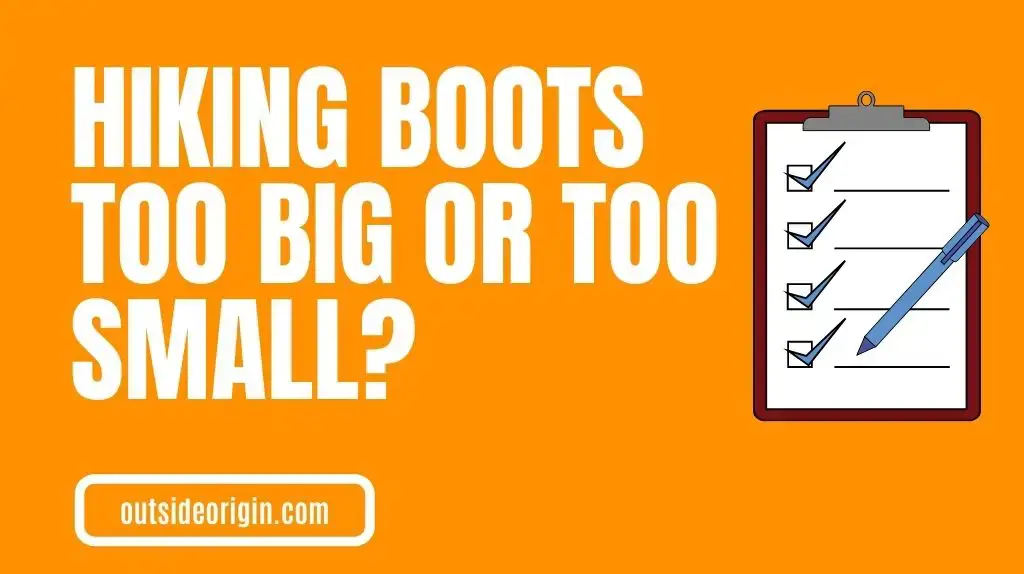
It is usually easy to tell if your hiking boots are too big or too small for your feet. The easiest way to tell the former is to try them on and walk around for a bit. If your feet are sliding back and forth, while walking in the shoes, then they are too long. If you go down a size and walk around in the boots and still they are not comfortable, increase your width and check again.
You could also do the wall/stair test by walking to the nearest wall, lifting your toes up, and pushing your foot against the wall. It is like stretching the back of your calves and if the tips of your shoes bend back then there is excess room in your toe box and the shoes are too long for you. While walking, jogging, or running, if you do not feel stability or your feet are sliding side to side, then the boots are too wide for you.
Try decreasing the width and opting for narrower boots with the same length. If this does not work then decrease the length and keep the same width and remember that as boots get longer the width will also increase. Checking to see if the boots are too tight in length is easier and obvious too as they smash the tips of your toes and rub the heels.
Moreover, if your shoes are too tight in the width then you probably would not be able to put them on. Problems may start to arise when using boots that are made to be snug. Leather footwear tends to expand with wear, so buy them a little snug but still comfortable. Try not to buy a pair with a lot of extra room that can stretch and leave your feet sliding.
Final Thoughts
To conclude, buying bigger hiking boots can allow you to have room to move your toes and use any type of socks you want. Nonetheless, you cannot simply order or buy them directly without doing enough research and trying them on and out. Moreover, you need to take precautions and be aware not to buy boots that are too big or too small for your feet. Keep in mind the type of terrain, the weight of the load you will carry, your arch height, and the shoe construction itself while buying.
Can You Do Me A Small Favor?
I have put a lot of time & effort into writing this post to provide you with the best info out there.
It’ll help me out if you could consider sharing it on your social media networks. You are also allowed to take any photo you want from my blog as long as you credit and link back!
Appreciate it! ❤️️

Hey, I am the founder of Outside Origin! I love hiking in my spare time and have gone to various different hikes. You can check out our about us section to learn more about what our team and I do over at Outside Origin.

